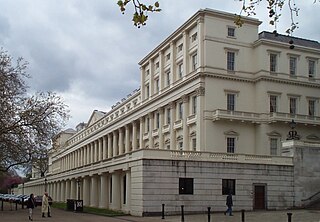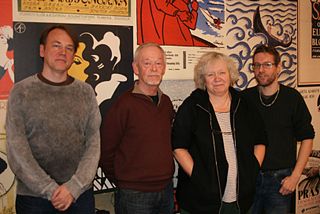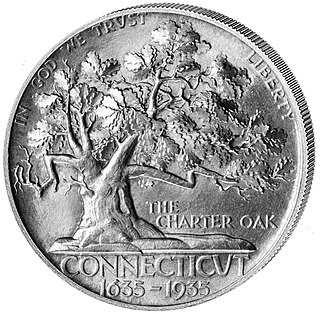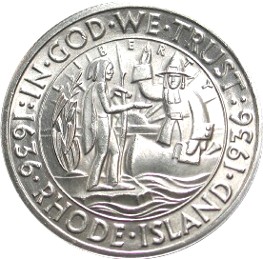Related Research Articles
John Bainbridge was an English astronomer and mathematician.

Samuel Eliot Morison was an American historian noted for his works of maritime history and American history that were both authoritative and popular. He received his Ph.D. from Harvard University in 1912, and taught history at the university for 40 years. He won Pulitzer Prizes for Admiral of the Ocean Sea (1942), a biography of Christopher Columbus, and John Paul Jones: A Sailor's Biography (1959). In 1942, he was commissioned to write a history of United States naval operations in World War II, which was published in 15 volumes between 1947 and 1962. Morison wrote the popular Oxford History of the American People (1965), and co-authored the classic textbook The Growth of the American Republic (1930) with Henry Steele Commager.

Sir Israel Gollancz, FBA was a scholar of early English literature and of Shakespeare. He was Professor of English Language and Literature at King's College, London, from 1903 to 1930.

Madras Day is a festival organised to commemorate the founding of the city of Madras in Tamil Nadu, India. It is celebrated on 22 August every year, 22 August 1639 being the widely agreed date for the purchase of the village of Madraspatnam or Chennapatnam by East India Company factors Andrew Cogan and Francis Day from Damarla Venkatadri Nayaka, the viceroy of the Vijayanagar Empire.
Gurpurab in Sikh tradition is a celebration of an anniversary of a Guru's birth marked by the holding of a festival.
"The Tercentenary Incident" is a science fiction/mystery short story by American writer Isaac Asimov. It was first published in the August 1976 issue of Ellery Queen's Mystery Magazine, and reprinted in the collections The Bicentennial Man and Other Stories (1976) and The Complete Robot (1982).

The Romanov Tercentenary egg is a jewelled Easter egg made under the supervision of the Russian jeweller Peter Carl Fabergé in 1913, for Tsar Nicholas II of Russia. The Fabergé egg was presented by Nicolas II as an Easter gift to his wife, the Tsaritsa Alexandra Fyodorovna. It is currently held in the Kremlin Armoury Museum in Moscow.

The Royal Society presents numerous awards, lectures and medals to recognise scientific achievement. The oldest is the Croonian Lecture, created in 1701 at the request of the widow of William Croone, one of the founding members of the Royal Society. The Croonian Lecture is still awarded on an annual basis, and is considered the most important Royal Society prize for the biological sciences. Although the Croonian Lecture was created in 1701, it was first awarded in 1738, seven years after the Copley Medal which is the oldest Royal Society medal still in use and is awarded for "outstanding achievements in research in any branch of science"

Sir John Rose Bradford, 1st Baronet was a British physician.

The Swedish Film Database is an Internet database about Swedish films, published by the Swedish Film Institute. It contains information about all Swedish films from 1897 onwards and foreign films that had cinema premiere in Sweden. It also provides many biographies of actors, directors, producers etc. who participated in Swedish films over the years. It is created with the support of the Bank of Sweden Tercentenary Foundation. The database comprises about 62,000 films and 265,000 people.

The Linnean Tercentenary Medal was commissioned in 2007 by the Linnean Society to commemorate the tercentenary of the birth of Carl Linnaeus. Recipients were in two categories: Silver Medal and Bronze Medal, for outstanding contributions to natural history.

The Maryland State Archives serves as the central depository for government records of permanent value. Its holdings date from Maryland's founding in 1634, and include colonial and state executive, legislative, and judicial records; county probate, land, and court records; church records; business records; state publications and reports; and special collections of private papers, maps, photographs, and newspapers. These records are kept in a humidity and temperature controlled environment and any necessary preservation measures are conducted in the Archives' conservation laboratory.

Harvard University celebrated the 300th anniversary of its founding in 1936 with elaborate festivities, hosting tens of thousands of alumni, dignitaries, and representatives of institutions of learning and scholarship from around the world.

The Pilgrim Tercentenary half dollar or Pilgrim half dollar was a commemorative fifty-cent coin struck by the United States Bureau of the Mint in 1920 and 1921 to mark the 300th anniversary (tercentenary) of the arrival of the Pilgrims in North America. It was designed by Cyrus E. Dallin.

The Maryland Tercentenary half dollar was a commemorative fifty-cent piece issued by the United States Bureau of the Mint in 1934. It depicts The Rt Hon. The 2nd Baron Baltimore on the obverse and the Coat of Arms of Maryland on the reverse.

The Connecticut Tercentenary half dollar, sometimes called the Connecticut half dollar, is a commemorative 50-cent piece struck by the United States Bureau of the Mint in 1935. The coin was designed by Henry Kreis and commemorates the 300th anniversary of the founding of Connecticut. Its obverse depicts the Charter Oak, where according to legend Connecticut's charter was hidden to save it from being confiscated by the English governor-general. An eagle appears on the coin's reverse side.

The Rhode Island Tercentenary half dollar is a commemorative fifty-cent piece struck by the United States Bureau of the Mint in 1936. The coin was designed by John Howard Benson and Arthur Graham Carey. Its obverse depicts Roger Williams, founder of the Colony of Rhode Island and Providence Plantations. It was intended to honor the 300th anniversary of Providence, Rhode Island, although it bears no mention of the city.

The Long Island Tercentenary half dollar was a commemorative half dollar struck by the United States Bureau of the Mint in 1936. The obverse depicts a male Dutch settler and an Algonquian tribesman, and the reverse shows a Dutch sailing ship. It was designed by Howard Weinman, the son of Mercury dime designer Adolph A. Weinman.

The Delaware Tercentenary half dollar is a commemorative fifty-cent piece struck by the United States Bureau of the Mint to commemorate the 300th anniversary of the first successful European settlement in Delaware. The obverse features the Swedish ship Kalmar Nyckel, which brought early settlers to Delaware, and the reverse depicts Old Swedes Church, claimed to be the oldest Protestant church in the United States still in use as a place of worship. While the coins are dated "1936" on the obverse and the reverse also has the dual date of "1638" and "1938", the coins were actually struck in 1937.

John Patrick Rourke FMLS is a South African botanist, who worked at the Kirstenbosch National Botanical Garden and became curator of the Compton Herbarium. He is a specialist in the flora of the Cape Floristic Region, in particular the family Proteaceae.
References
- "The Tercentenary Lectures (1960)" . Retrieved 2009-03-20.